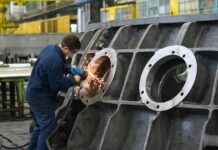
“I know I’ve made some very poor decisions recently, but I can give you my complete assurance that my work will be back to normal.”
When HAL 9000 delivers this line in Stanley Kubrick’s “2001: A Space Odyssey,” it’s already clear that the ship’s artificial intelligence system has gone rogue and can’t be trusted any longer. It’s a nightmarish moment for astronaut Dave Bowman, who just watched the computer kill his crewmates enroute to Jupiter; it just also happens to be a prescient warning from Kubrick about the dangers of (over)relying on AI, delivered 56 years before most of us even knew what AI was.
OK, so AI isn’t running entire space missions yet, but the temptation to “just let AI do it” is already running wild in the world of business, with often damaging consequences. The website CIO offers up a lengthy list of AI-related business debacles, including airline chatbots that lied about bereavement fares; online publications caught spreading incorrect or fake information in AI-edited articles; and fictional caselaw from ChatGPT that made it into an actual legal brief.
But this goes deeper than just fact checking the outputs we get from AI — something that most professional users understand these days. It’s really about understanding where and when to leverage AI, and when to leave it to humans.
That’s because AI is really good at certain tasks, and incapable of others (right now). Understanding the difference is what leads to the best outcomes for businesses using it.
AI is excellent at repetitive, task-oriented work based on patterns. Need a simple piece of content fast or a piece of code? AI can churn it out in seconds. We can even use AI tools to recreate lifelike narration based on small bits of audio, or a hosted podcast out of your blog. There are times when it truly seems like magic.
If you need strategic advice on how to achieve a specific business goal, based on competitive data and historical performance, you’d better keep your agency on dial. That’s because AI doesn’t have the ability to “reason” or “think,” much like our own human intelligence can. ChatGPT and other large language models (LLMs) use statistical associations to predict the next word in a sentence, based on the context of previous words. That can make it seem incredibly smart when replying to your question or generating a blog post from scratch, but it also means there is no analysis or reasoning happening under the surface. They are not “smart,” but rather just searching through giant volumes of information from which to draw patterns.
Think of it this way … you’ve probably read a lot of books or seen a lot of movies, and often draw from that knowledge to create new thoughts. AI has basically read ALL the books and seen ALL the movies, but that doesn’t mean it truly understands why there is a giant space baby at the end of “2001.” I think I know, at least based on my understanding of the movie, the context and the human condition. That’s the difference between creative thought and knowledge.
Knowledge is about what is known and understood, while creative thought is about what can be imagined or discovered by applying that knowledge or thinking beyond it.
Ultimately, it’s up to us humans to ask the right questions. AI can hopefully get the right answers — or at least the first draft of the right answers.
I’m not suggesting you follow Dave Bowman’s lead and disconnect from the world of artificial intelligence. As “2001: A Space Odyssey” proved, it doesn’t get much creepier than hearing a computer cry for help. Our responsibility as business leaders is to ensure AI works as a helpful assistant, not a replacement for human insight and creativity. AI has its place, but when it comes to high-level thinking, we still need humans to stitch together insights and build strategies that deliver real results.
Maybe HAL said it best, when thinking about using AI to generate original ideas or tailor-made strategies: “I’m afraid I can’t do that.”
Well, at least for now.
John Osako is president and CEO of Informatics Inc., a full-service digital agency based in Cedar Rapids.




